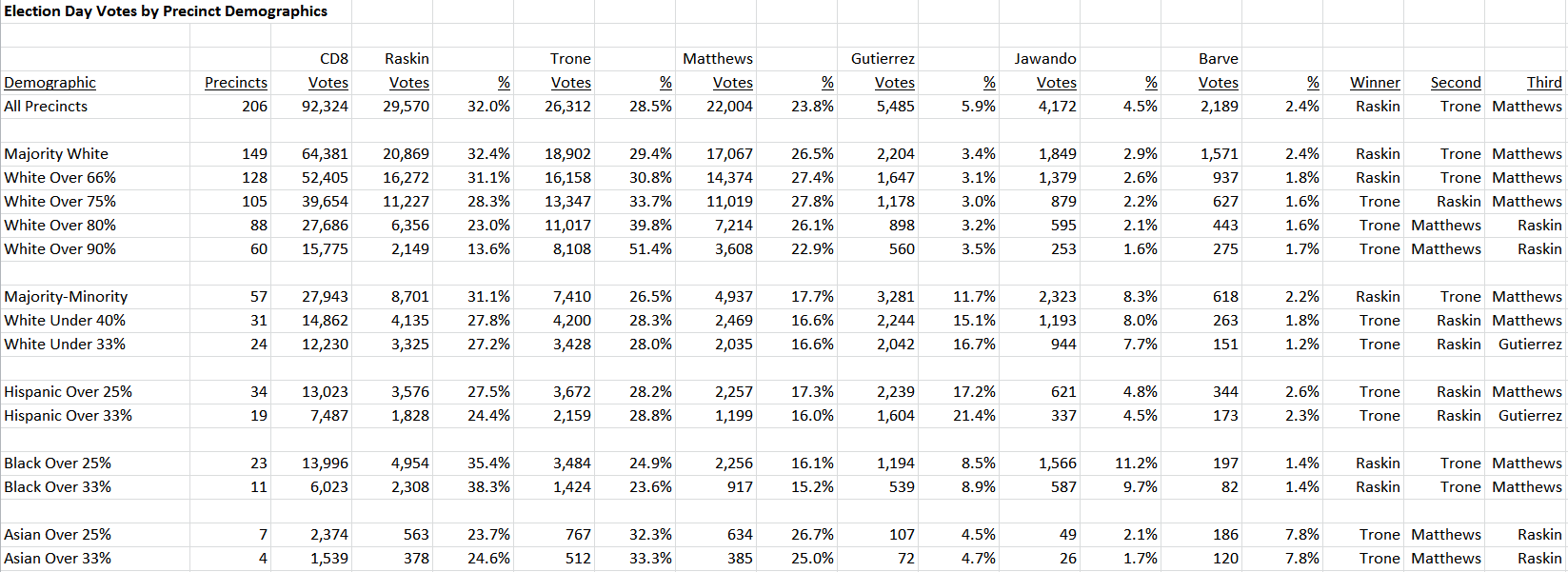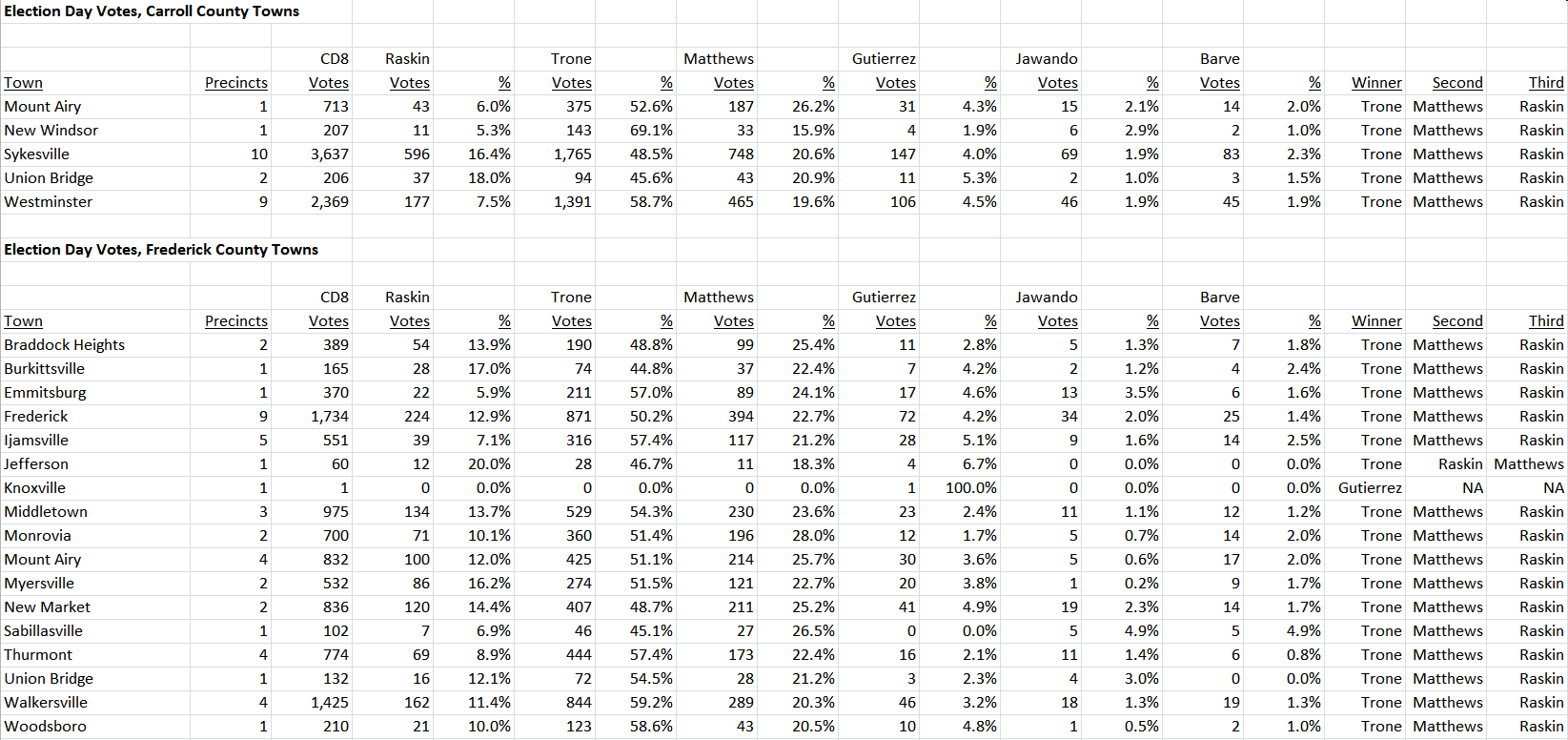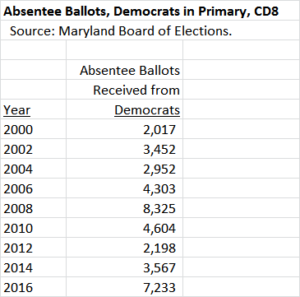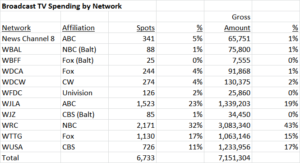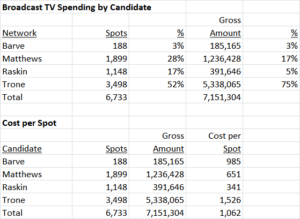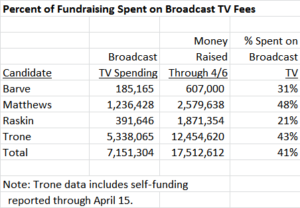A guest blog by Adam Pagnucco.
Let’s put together the previous three parts and look in detail at the strengths and weaknesses of the top three candidates.
Senator Jamie Raskin
Strongest Performances
Takoma Park: 64.2% (1st)
Legislative District 20: 51.9% (1st)
Silver Spring Inside the Beltway: 49.9% (1st)
Inside the Beltway: 47.9% (1st)
Montgomery County Council District 5: 47.2% (1st)
Chevy Chase: 45.5% (1st)
Cabin John: 41.6% (1st)
Bethesda: 41.3% (1st)
Montgomery County Council District 1: 41.3% (1st)
Legislative District 16: 40.6% (1st)
Weakest Performances
Derwood: 11.0% (3rd)
Carroll County Total Votes: 12.0% (3rd)
Damascus: 12.5% (3rd)
Frederick County Total Votes: 12.7% (3rd)
White Population Over 90%: 13.6% (3rd)
Glenmont/Norbeck: 15.0% (4th)
The above areas illustrating Raskin’s greatest strengths have something in common: they are all totally or primarily inside the Beltway. (Most of the portion of Council District 1 that is outside the Beltway is in Congressional District 6.) The areas showing his greatest weaknesses also have something in common: they are all totally or primarily outside the Beltway, some of them a considerable distance outside. Raskin expanded his geographic base successfully since 74% of his votes came from outside District 20, but his votes began to dry out north of Norbeck Road. His 6.5 point victory was due to his ability to consolidate the vote in Downcounty precincts while pulling just enough votes from the north to prevent David Trone or Kathleen Matthews from winning.
David Trone
Strongest Performances
Carroll County Total Votes: 51.8% (1st)
White Population Over 90%: 51.4% (1st)
Frederick County Total Votes: 51.2% (1st)
Damascus: 44.9% (1st)
Montgomery County Council District 2: 41.5% (1st)
Legislative District 15: 38.6% (1st)
Derwood: 36.9% (2nd)
Glenmont/Norbeck: 36.1% (1st)
Potomac: 35.1% (1st)
Legislative District 14: 34.2% (1st)
Weakest Performances
Takoma Park: 11.7% (3rd)
Chevy Chase: 13.9% (3rd)
Inside the Beltway: 15.8% (3rd)
Legislative District 20: 16.8% (3rd)
Silver Spring Inside the Beltway: 17.0% (3rd)
Bethesda: 18.1% (3rd)
Montgomery County Council District 1: 18.4% (3rd)
Montgomery County Council District 5: 18.5% (2nd)
Legislative District 16: 19.3% (3rd)
Cabin John: 19.7% (3rd)
Trone’s strengths and weaknesses are the mirror image of Raskin’s. He lost to both Raskin and Matthews inside the Beltway, but as the precincts went farther north, Trone got stronger. Trone’s success in the northern Counties as well as Upcounty Montgomery will no doubt cause him to take a hard look at the Congressional District 6 seat should John Delaney run for Governor. Western Maryland accounts for a fifth of CD8’s Democratic primary voters, but in CD6, it accounted for roughly 40% of the vote in both the 2016 and 2014 Democratic primaries. One interesting thing not shown here: Trone was the leader in majority-minority, heavily Hispanic and heavily Asian precincts.
Kathleen Matthews
Strongest Performances
Derwood: 40.8% (1st)
Leisure World: 33.1% (1st)
Bethesda: 32.5% (2nd)
Legislative District 16: 32.3% (2nd)
Cabin John: 32.0% (2nd)
Chevy Chase: 32.0% (2nd)
Montgomery County Council District 1: 31.6% (2nd)
Weakest Performances
Takoma Park: 8.4% (3rd)
Silver Spring Inside the Beltway: 13.4% (3rd)
Blacks Over 33% of Population: 15.2% (3rd)
Montgomery County Council District 5: 15.2% (3rd)
Hispanics Over 33% of Population: 16.0% (4th)
Whites Under 40% of Population: 16.6% (3rd)
Majority-Minority Precincts: 17.7% (3rd)
Matthews finished second in most parts of CD8, which isn’t bad, but she finished first in just two local areas: Leisure World and Derwood, which has only one precinct in the district. If she had also finished first in, say, Bethesda and Chevy Chase, she might have gotten close, but Raskin owned the areas inside the Beltway. Matthews told the Washington Post that she was thinking of running for local office in the future. Here’s an idea for her: in a County Council at-large race, the top four vote-getters triumph. A candidate who finishes second everywhere would be a lock to win.
Now here’s an interesting thought. With Raskin going to Congress, Matthews thinking about running again and Trone not ruling it out either, could all three of them ultimately be in office after the next election?

